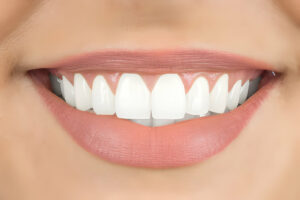Belly fat extends beyond a mere aesthetic issue; it poses significant risks to your health and overall well-being. Discovering the best ways to lose belly fat involves more than quick fixes; it requires a comprehensive approach.
Known as visceral fat, belly fat wraps around your internal organs and escalates your risk of developing chronic conditions like diabetes, heart disease, and certain types of cancer. Understanding how to get rid of belly fat is a crucial step toward safeguarding your health.
Thankfully, effective belly fat loss methods exist for shedding this stubborn area and boosting your fitness levels. In this article, we’ll delve into a holistic approach that pairs nutritional strategies with physical activity, stress reduction, and lifestyle modifications to aid in reaching your objectives.
We’ll also share beneficial recipes and at-home exercises designed to incinerate calories and trim down belly fat. Specifically, exercises to lose belly fat at home and healthy recipes for belly fat loss provide practical, sustainable solutions for anyone looking to make a significant impact on their waistline.
Adhering to these recommendations will not only help you eliminate belly fat but will also improve your life quality and avert potential health issues. Let’s explore how to lose belly fat for women and men, beginning with fundamental changes through a sustainable belly fat loss diet plan.
Table of Contents
ToggleUnderstanding Belly Fat and Its Dangers
Belly fat is not a uniform entity; it comprises two primary types: subcutaneous and visceral. Subcutaneous fat, the one you can grasp with your fingers, lies just beneath the skin, enveloping nearly the entirety of your body. In contrast, visceral fat remains out of sight and touch, buried deep within your abdomen, cradling vital organs such as the stomach, liver, and intestines.
Though both are forms of belly fat, visceral fat poses a significantly greater threat to your health.
The Difference Between Subcutaneous and Visceral Fat
Subcutaneous and visceral fat perform distinct roles and exert different impacts on your body. Subcutaneous fat acts as an energy reserve, a cushion safeguarding your muscles and bones, a conduit for nerves and blood vessels, a thermal insulator, and a connector attaching your skin to underlying muscles and bones.
Conversely, visceral fat is metabolically more active, emitting cytokines—chemicals that incite inflammation, insulin resistance, and other metabolic disturbances.
Health Risks Associated with Belly Fat
Excessive belly fat, particularly the visceral type, amplifies your risk for various health issues, including heart disease, heart attacks, high blood pressure, type 2 diabetes, sleep apnea, certain cancers (colon, esophagus, pancreas), fatty liver disease, kidney disease, and sudden death.
An accumulation of belly fat elevates the likelihood of encountering these maladies. Belly fat can be quantified by measuring waist circumference. For women, a measurement exceeding 35 inches, and for men, more than 40 inches, signifies a heightened risk of diseases related to belly fat.
Nutritional Strategies for Reducing Belly Fat
What you eat significantly impacts your belly fat. Certain foods and nutrients can aid in losing visceral fat, while others could exacerbate the condition. The following are some effective nutritional strategies aimed at reducing belly fat.
Eat Plenty of Soluble Fiber
Soluble fiber dissolves in water, transforming into a gel-like substance in your gut, which slows down food digestion and absorption. This process helps you feel fuller longer, reducing calorie intake. Soluble fiber also plays a role in lowering blood sugar and cholesterol levels, both associated with visceral fat accumulation. Excellent sources include fruits, vegetables, legumes, oats, and barley. For effective belly fat reduction, aim for at least 10 grams of soluble fiber daily.
Avoid Trans Fats and Limit Sugary Foods
Trans fats, created by adding hydrogen to unsaturated fats like soybean oil, are prevalent in processed foods such as margarine, spreads, and baked goods. These fats contribute to inflammation, insulin resistance, and abdominal fat gain, and increase the risk of heart disease and diabetes. Avoid trans fats by carefully reading ingredient labels and steering clear of products with partially hydrogenated oils. Additionally, sugary foods and drinks increase blood sugar and insulin levels, encouraging fat storage and appetite. Excessive sugar consumption can also lead to fatty liver disease, linked to visceral fat. Opt for natural sweetness from fruits and minimize added sugar to limit sugar intake.
Include Protein in Your Diet
Protein is vital for building and maintaining muscle, tissue, and enzymes, and it supports belly fat loss by enhancing metabolism, increasing satiety, and preserving muscle mass. High protein consumption correlates with lower abdominal fat. Prioritize protein-rich foods such as eggs, fish, poultry, meat, dairy, soy, nuts, and seeds in your diet, including a good protein source in every main meal to reap its benefits.
Limit Alcohol and Sugar-Sweetened Beverages
Alcohol and sugar-sweetened drinks, packed with calories and sugar, can result in weight gain and increased belly fat. Alcohol may also boost your appetite and decrease your inhibitions, leading to overeating and unhealthy food choices. Similarly, sugar-sweetened beverages cause a spike in blood sugar and insulin levels, encouraging fat storage and hunger. To cut down, opt for water, unsweetened tea, or sparkling water with a splash of lemon or lime instead. If you consume alcohol, do so moderately and avoid binge drinking.
Physical Activity and Stress Management
Optimizing your health and diminishing belly fat encompasses more than just nutrition; it involves engaging in meaningful exercises to lose belly fat at home and managing stress effectively. We’ll also look at how to lose belly fat fast and safely through a balanced combination of diet and exercise.
The Role of Aerobic Exercise and Resistance Training
Aerobic exercises, widely known as cardio, encompass any activities that elevate your heart rate and breathing rhythm. These exercises are key in burning calories, enhancing cardiovascular health, and reducing deep abdominal fat. Notable examples include walking, running, biking, swimming, and dancing. The recommended duration is at least 150 minutes of moderate-intensity or 75 minutes of high-intensity aerobic exercise weekly, as per the Physical Activity Guidelines for Americans.
Resistance training, often referred to as strength training or weight lifting, involves exercises where your muscles contract against a form of resistance, such as weights, resistance bands, or body weight. This form of exercise is crucial for building and preserving muscle mass, accelerating metabolism, and preventing muscle loss due to aging or weight reduction. When combined with aerobic exercises, resistance training proves significantly efficient in cutting down visceral fat. Try incorporating exercises like squats, lunges, push-ups, pull-ups, and bench presses into your routine, aiming for at least two resistance training sessions each week, targeting all major muscle groups, following the American College of Sports Medicine’s guidelines.
Importance of Restful Sleep
Quality sleep is paramount for your health and overall well-being, playing a vital role in hormone regulation, tissue repair, and immune system enhancement. Your sleep patterns can also directly affect your appetite, metabolism, and body weight. Studies have revealed that people sleeping fewer than six hours per night generally display higher body mass indices (BMI), fat percentages, and waist measurements than those sleeping seven to eight hours. Inadequate sleep can elevate cortisol levels, a stress hormone linked to increased belly fat. For better sleep quality and duration, adhere to recommendations such as maintaining a consistent sleep schedule, avoiding stimulants and heavy meals before bedtime, ensuring a comfortable sleep environment, minimizing screen time before sleep, and engaging in soothing activities before bed.
Techniques to Reduce Stress and Its Impact on Belly Fat
While stress is an inevitable aspect of life, excessive stress can be detrimental to your health, triggering a fight-or-flight response that increases cortisol and adrenaline levels – hormones associated with belly fat accumulation. Stress can also negatively affect your dietary choices, making you more inclined to opt for foods high in fat, sugar, and calories. To mitigate stress and its effects on belly fat, consider strategies such as identifying and addressing stress triggers, practicing positive self-talk and gratitude, seeking social support, indulging in enjoyable hobbies and activities, embracing mindfulness, meditation, yoga, or breathing exercises, and employing relaxation techniques like massage or aromatherapy.
Lifestyle Changes and Long-Term Health
Shedding belly fat isn’t just a quick fix but a vital step towards lifelong health and happiness. Embarking on a belly fat loss diet plan lays the groundwork for durable lifestyle changes.
Below are practical tips for making these changes.
Adopting a Healthy Eating Plan, Not a Temporary Diet
A common error in the quest to lose belly fat is the reliance on restrictive or trendy diets. These can be difficult to maintain, potentially leading to nutritional deficiencies or a rapid regain of weight. A better approach is to embrace a healthy eating plan tailored to your tastes, needs, and objectives, which:
- Provides sufficient calories and nutrients for your energy and health needs.
- Incorporates a diverse range of foods across all food groups, including fruits, vegetables, whole grains, lean proteins, healthy fats, and low-fat dairy.
- Reduces consumption of added sugars, saturated and trans fats, sodium, and alcohol.
- Permits occasional treats, helping you avoid feelings of deprivation or guilt.
- Is flexible, enjoyable, and effortlessly integrated into your daily life.
An example of a beneficial eating plan is the Mediterranean diet. It emphasizes fruits, vegetables, whole grains, legumes, nuts, seeds, fish, and olive oil, along with moderate wine consumption, and is proven to aid in reducing belly fat.
The Importance of Consistency and Patience
Losing belly fat is a marathon, not a sprint. It demands consistency, patience, and practical expectations. Dramatic overnight results are unrealistic, and extreme diets or exercise regimens may do more harm than good. Instead, aim for a steady weight loss of about 1 to 2 pounds per week, a goal supported by most health professionals as safe and productive. This can be achieved by creating a daily calorie deficit of approximately 500 to 1,000 calories, through reduced food intake, increased physical activity, or both.
Track progress by noting measurements such as waist circumference, body fat percentage, and BMI, and by keeping a diary of your diet and exercise habits.
Combining Different Methods for Effective Results
No single method magically melts away belly fat; however, combining various strategies—including how to lose belly fat fast and safely—can provide comprehensive benefits. These include:
- Increasing intake of soluble fiber to reduce appetite and fat absorption.
- Avoiding trans fats and limiting sugary foods to combat inflammation, insulin resistance, and belly fat accumulation.
- Incorporating protein into your diet to boost metabolism, enhance satiety, and preserve muscle mass.
- Reducing alcohol and sugar-sweetened beverage consumption to avoid unnecessary weight gain.
- Practicing aerobic exercise and resistance training to burn calories, improve heart health, and diminish visceral fat.
- Ensuring sufficient quality sleep to regulate hormones, repair tissues, and boost immunity, all of which influence metabolism and weight.
- Managing stress effectively to limit its effect on belly fat through the reduction of stress-related hormones like cortisol and adrenaline.
By integrating these tactics with a belly fat loss diet plan, you can formulate a well-rounded and effective strategy to banish belly fat and elevate your overall well-being.
Conclusion
Belly fat is not just a concern for your appearance but poses a significant health risk as well. It elevates the possibility of encountering chronic conditions, including diabetes, heart disease, and various cancers.
To effectively reduce belly fat and boost your overall health and well-being, it’s essential to embrace a holistic strategy. This strategy should encompass dietary adjustments, regular physical activities, effective stress management, and pivotal lifestyle modifications. Adhering to these recommendations will not only help you reach and sustain a healthy weight and slim waistline but will also improve your life quality and mitigate the risk of future health issues. Embark on this transformative journey today and witness the impactful changes for yourself!





















